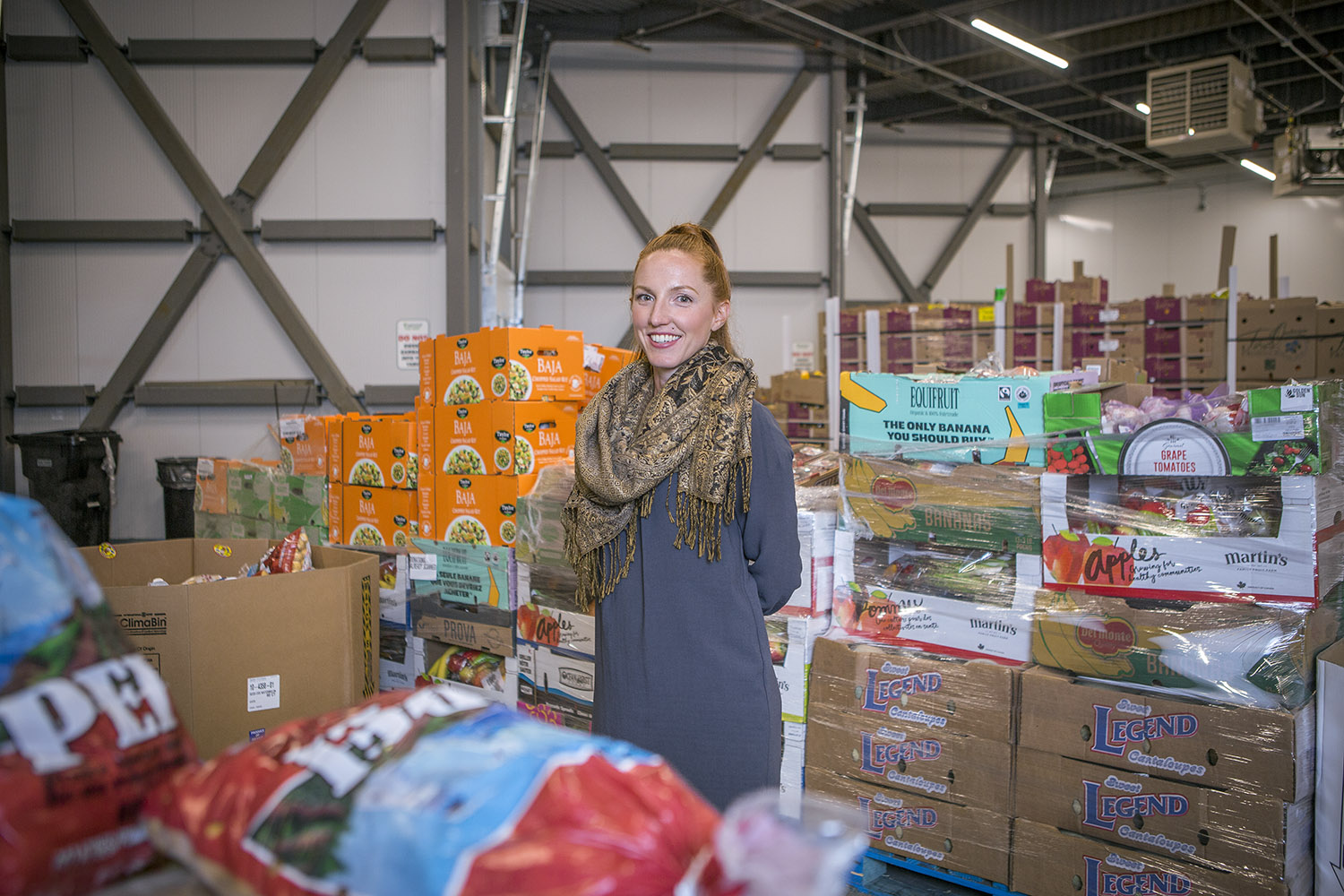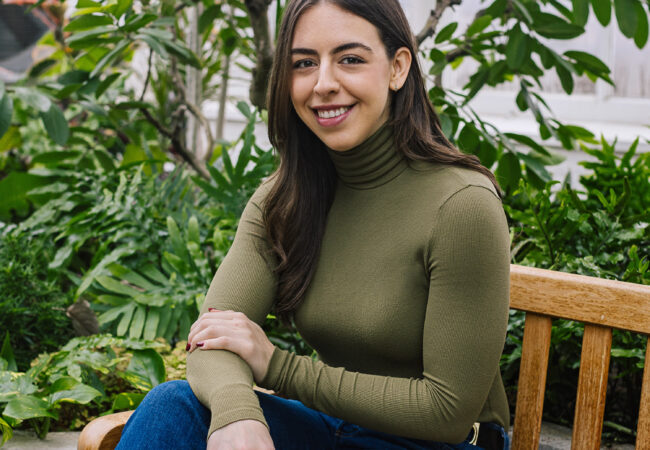Veronica Summerhill (Nutrition and Food ’13) has always worked in the food sector in one role or another, but it was during her time at TMU that she really figured out her path.
“TMU’s nutrition program was super well-rounded,” says Summerhill. “You got in-depth science courses, but you also had courses like professional practice where you learned how to work with people.” During her third-year professional practice course, she started digging into the environmental impacts of food and our food systems. “I started thinking of food as a holistic system and not just as nutrition or for enjoyment. Food is also political and social.”
Summerhill now works with Second Harvest, Canada’s largest food rescue organization, as director of product. Second Harvest’s vision for Canada is no waste, no hunger. “We rescue good, surplus food and get it to people who need it: this could be other charities and nonprofits across Canada, including breakfast programs at schools or children and senior centres.”
Food security has become an issue of import in Canada, especially over the COVID-19 pandemic. When asked why this might be the case, Summerhill says, “First, we have to define what food security looks like. A lot of the time, people think of it as simply the availability of food and whether you can access it or not. But food insecurity is really the availability of a source of income to be able to continue to feed yourself healthy, culturally appropriate, nutritious foods.”
In Toronto, where we’re seeing major population growth, urban sprawl and a worsening housing crisis, Summerhill says there’s a growing number of people who are either unemployed or underemployed, or underhoused who can’t purchase food for themselves on an ongoing basis or can’t easily access it because of work hours or travel distances.
“If you look at the neighbourhoods outside of the Toronto core in North York and Scarborough, you may need a car to access healthy foods or you need time for longer periods of transit and then be able to carry your food home,” says Summerhill. ‘Someone who's working two jobs will have a much harder time doing that. The pandemic has especially caused a lot of problems there.”
Diverting food from landfills through programs such as Second Harvest can also help reduce Canada’s carbon footprint, because, Summerhill says, food waste is a major contributor to climate change. “When food is wasted, all of the resources used to create it are also wasted.” This includes the farming and production practices as well as the greenhouse gas emissions necessary to transport it to where it will be sold.
“That’s one factor of food waste, but also when food and organic materials go to a landfill, they create methane.” Methane has an accelerated warming effect, with 80 times more warming power over CO₂.
Seeing food equality across Canada is possible, says Summerhill, and she remains optimistic about the future. “Ultimately I am a bit of an idealist and I do think that if we work together, the great challenges become a lot smaller. I see more collaboration happening across sectors. And I think the work Second Harvest does is one of the amazing examples of this.”
Check out Second Harvest’s Food Rescue app
Second Harvest’s free app, Food Rescue App, is available to all businesses, charities and nonprofits in Canada. When businesses with surplus food log into the app, they can create a donation with any degree of frequency (i.e., a one-time donation, a weekly, monthly or even annual one). Summerhill says the app then matches their donation with appropriate nonprofits and charities in their neighbourhoods, so that the food stays local.





